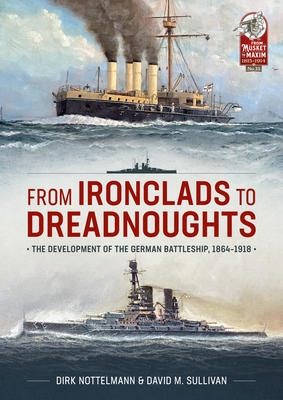From Ironclads to Dreadnoughts: The Development of the German Battleship, 1864-1918

From Ironclads to Dreadnoughts: The Development of the German Battleship, 1864-1918
The story up to that point, with the related acquisition of ships, first from abroad, later exclusively from German shipyards, and their particular histories, is covered by the first four chapters, while the fundamental changes after the accession of Alfred (von) Tirpitz to the post of 'Staatssekretär des Reichs-Marine-Amts' ('naval minister', in fact) in 1897, and the implementation of his subsequent so-termed 'naval laws', are pointed out in detail in the remaining six.
Especially, in these chapters the focus is laid on telling the history of the individual classes of ships, from their inception to the wide variety of influences during the design process, a brief overall history - extended in case of special (war) experiences - to their individual ends. Each of these chapters is introduced by a brief narrative of the political/technical environment, into the individual class would be constructed.
All of this is accompanied by an abundant outfit of illustrations, photos, maps and tables, many of them never been issued before, stemming from the vast archiva
PRP: 431.64 Lei
Acesta este Prețul Recomandat de Producător. Prețul de vânzare al produsului este afișat mai jos.
388.48Lei
388.48Lei
431.64 LeiIndisponibil
Descrierea produsului
The story up to that point, with the related acquisition of ships, first from abroad, later exclusively from German shipyards, and their particular histories, is covered by the first four chapters, while the fundamental changes after the accession of Alfred (von) Tirpitz to the post of 'Staatssekretär des Reichs-Marine-Amts' ('naval minister', in fact) in 1897, and the implementation of his subsequent so-termed 'naval laws', are pointed out in detail in the remaining six.
Especially, in these chapters the focus is laid on telling the history of the individual classes of ships, from their inception to the wide variety of influences during the design process, a brief overall history - extended in case of special (war) experiences - to their individual ends. Each of these chapters is introduced by a brief narrative of the political/technical environment, into the individual class would be constructed.
All of this is accompanied by an abundant outfit of illustrations, photos, maps and tables, many of them never been issued before, stemming from the vast archiva
Detaliile produsului










